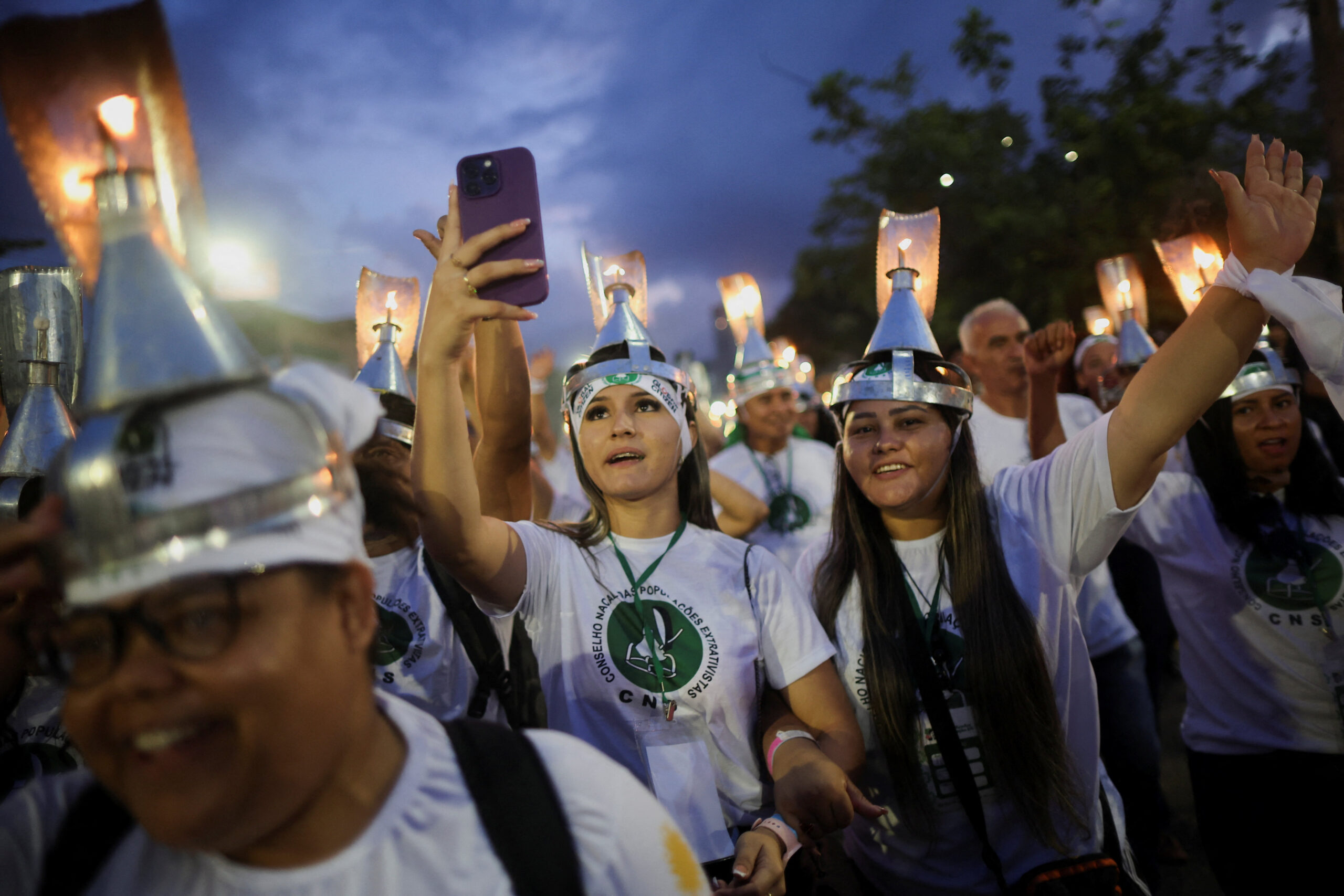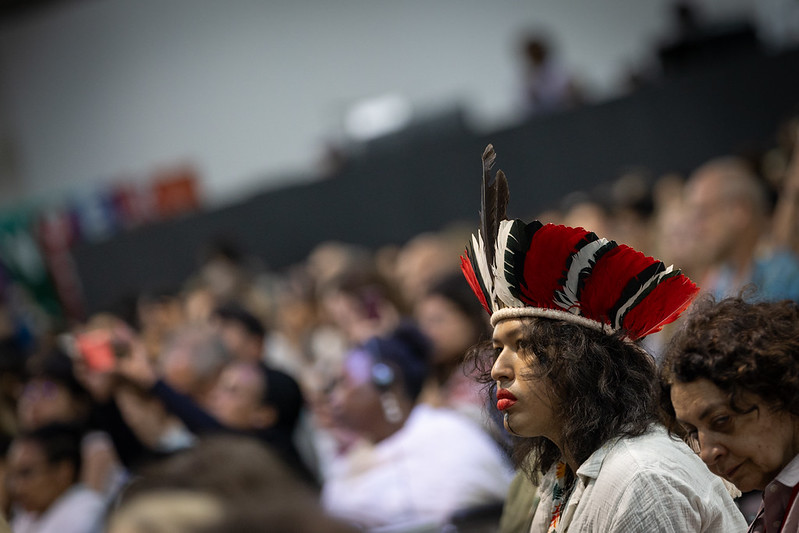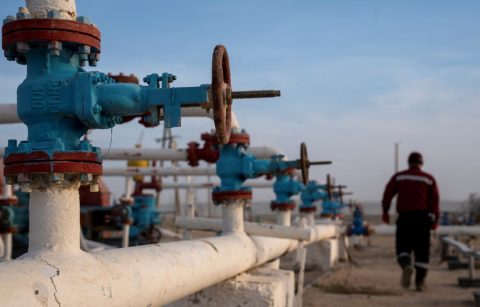Ben Abraham is a senior consultant at the Talanoa Institute and a former senior climate finance adviser at the New Zealand Ministry of Foreign Affairs and Trade.
COP30 must deliver a significant outcome on finance to meet its billing as an “implementation COP”. For whatever commitments Parties reach on mitigation, adaptation, or protecting nature, they will not come to pass if finance flows do not align with their implementation.
At COP29 in Baku, countries agreed a new collective goal on climate finance. By 2035, it aims to channel $300 billion a year in public climate support and $1.3 trillion in wider investment to developing nations. The announcement made headlines, but many countries in the Global South left disappointed, arguing the sums still fell far short of what is needed.
And they have a point. Estimates of climate investment needs in the Global South until 2030 are on the order of $5.1 trillion-$6.8 trillion. At a global level, the International Energy Agency estimates annual clean energy investment must reach $4 trillion – more than triple current levels – to achieve net zero emissions by mid-century. At the same time, governments spent $7 trillion on global fossil fuel subsidies in 2022 alone.
The imbalance is stark. While the finance flowing in the right direction is increasing, too much continues to support high-carbon activities, and too little reaches the communities most exposed to climate impacts. For example, only a tiny share (2.5%) of global climate finance flows reach sub-Saharan Africa, despite the region’s acute vulnerabilities.
In new book, WRI chief argues for climate optimism despite obstacles
These figures illustrate the conclusion of the Intergovernmental Panel on Climate Change that while there is sufficient global capital to close the investment gap for meeting the goals of the Paris Agreement, urgent action is required to redirect it.
Fully delivering on the new climate finance goal agreed at COP29 will be critical to the success of the Paris Agreement and donor countries are due to make renewed climate finance commitments this year. But as the statistics show, this cannot be where the conversation on climate finance ends.
This is where Article 2.1c of the Paris Agreement comes in.
Aligning finance with global climate goals
The long-term goals of the Paris Agreement envision aligning global finance flows with climate action. Article 2.1c of the pact is the goal of “Making finance flows consistent with a pathway towards low greenhouse gas emissions and climate-resilient development.” It sits equally alongside the goals of limiting global temperature rise to 1.5 degrees (Article 2.1a) and adapting to climate change (Article 2.1b).
There has also already been action in the real economy towards this goal. Many major banks and investors have pledged to align their portfolios with net zero and, despite backlashes in some contexts, the majority are still committed to do so. More than 50 diverse jurisdictions are developing or using sustainable finance taxonomies, and the market for green and social bonds has expanded rapidly, reaching $6 trillion in 2025.
But valiant as these bottom-up efforts are, they are fighting an uphill battle. Without political support from the top they will continue to lack the speed and scale required.
Balance and integrity are also issues: finance flows for adaptation receive much less attention than for mitigation (measures that reduce emissions), developing countries remain on the periphery of many initiatives, and oversight of potential greenwashing is insufficient.
Meanwhile, what have the UN climate negotiations done to address global finance flows? The answer is, unfortunately, not much. But COP30 presents an opportunity to change this.
Sending political signals on green finance
Since COP 27 in Sharm el-Sheikh, a series of workshops on Article 2.1c has created space for technical exchanges but not yet produced decisions to drive real-world change. The final workshop in this series has just taken place in Rome, and leaders will decide how to take forward Article 2.1c when they gather in Belém in November.
At the Rome workshop, the need for the UN climate process to better support the realignment of finance flows was widely recognised. Otherwise, the rules and norms shaping these efforts will remain uncoordinated and left to other institutions where climate is not prioritised and decision-making is much less inclusive and transparent.
While no COP decision can magically make all finance go green, the annual summits can send powerful political signals and leverage the Paris Agreement architecture to facilitate action and accountability.
To meet Africa’s clean energy goals, investors urged to tolerate higher risk
For Article 2.1c, this could be done by establishing a framework for tracking progress towards aligning finance with climate goals, guiding policies to redirect investment, and ensuring developing countries can access the capital they need. The framework should also support balanced attention to both adaptation and mitigation.
Political backing for the implementation of Article 2.1c would support COP30’s response to the ambition gap, with the national climate plans submitted so far still way off bringing us on track to limit global warming to 1.5C.
The importance of a COP30 decision on Article 2.1c
Properly crafted, a decision on Article 2.1c could send a powerful signal that governments understand climate action is not just about having ambition, but also about aligning the financial system with those ambitions.
For developing countries, this could signal that finance flows will finally help turn plans on paper into projects that change lives. For markets, it could provide the certainty needed to unlock greater private investment. For citizens, it can restore faith in international climate cooperation by tackling the issue at its core.
Among all the decisions Belém could produce, a strong outcome on Article 2.1c could prove the most significant. If finance continues to support fossil fuels at today’s levels, the Paris Agreement will fail. If it is equitably redirected to clean energy and resilience, there is still a chance to deliver.
While authority for the full suite of actions needed to achieve this lies beyond the remit of the UN climate regime, there is an important role for the COP process to play. Its credibility in an era of implementation depends on it.
The post How COP30 could deliver an ambitious outcome on global finance flows appeared first on Climate Home News.
How COP30 could deliver an ambitious outcome on global finance flows
Climate Change
Members of America’s Largest Power Grid Can’t Agree on How to Power Data Centers
With no consensus among stakeholders, PJM Interconnection’s 10-member board now must craft a policy for surging data-center demand that has already driven up electricity prices for millions.
After months of wrangling over how to handle surging power demand from AI-driven data centers and the resulting spike in electricity prices for millions, members of PJM Interconnection, the nation’s largest grid operator, could not agree on a solution.
Members of America’s Largest Power Grid Can’t Agree on How to Power Data Centers
Climate Change
“Coordinated backlash”: Activists say COP30 gender spat reflects wider threat
During the closing session of COP30, the representative of the Holy See – the governing body of the Vatican – was booed. That reaction was triggered by his statement requesting that any mentions of gender should be “understood as grounded on the biological sexual identity that is male and female”.
The comments followed a heated debate that had threatened to derail talks on the new Gender Action Plan (GAP) in Belém, stirring concerns that growing political pressure in the wider world to roll back advances on gender issues had seeped into the UN climate process.
Gender was a hotter-than-usual topic at this COP. Negotiators were tasked with agreeing a new GAP – a document to guide how gender features in climate decisions and action over the next 10 years, including balanced participation in climate talks, ensuring that climate projects consider different gender needs in their implementation, and collecting data that is broken down by gender.
Part of a broader work programme on gender, which was renewed during COP29, work on the GAP started at June’s mid-year talks in Bonn. That produced a text containing 99 brackets, denoting issues to be resolved. As disagreement among parties multiplied in Brazil, the last draft made public during COP30 had 496 brackets, making it a small miracle that a final version of the GAP was approved at the summit.
COP30 fails to land deal on fossil fuel transition but triples finance for climate adaptation
The most controversial issue was the definition of gender, which the Holy See, Argentina, Paraguay and Iran wanted to refer to as “biological sex”, reflecting their concerns about trans and non-binary people. One draft version of the text included a footnote added by each of those countries marking their objections. None of them made it into the final decision.
While Russia did not submit its own footnote, Climate Home News understands that it pushed hard to replace the term “gender” with “women and girls” and “men and boys”. During its intervention at the closing plenary, Russia’s delegate said his government works to strengthen the institution of marriage, which it understands as “a relationship between a man and a woman”.
Another thorny issue was “sexual and reproductive health”, a term that did not appear in the final text. The Holy See was among those that fought hard to exclude it. Archbishop Giambattista Diquattro, the head of delegation, said in an interview with Vatican News that tackling this topic was “a diversion from the real issue under discussion”, adding that “the inclusion in the text of sexual and reproductive rights, which include abortion”, is something the city-state could not “in any way accept.”
“Cruel” intrusion into climate debate
Partway through COP30, as the rows over gender surfaced, women’s rights organisations denounced the situation at a press conference.
“We’ve always had fights on the Gender Action Plan… but this is different. This is trying to actually push women back by having this binary definition,” said Mary Robinson, former Irish president who is now a member of the Elders. “It’s so cruel. I mean, it’s actually unbelievable that this would enter into our space.”


Bridget Burns, executive director of the Women’s Environment & Development Organization (WEDO), said it felt like a coordinated backlash – and it wasn’t limited to the gender negotiations.
Argentina and Paraguay also raised objections to definitions of gender in the Just Transition Work Programme (JTWP) negotiations. But they didn’t get what they wanted there either.
“The outcomes we got in the JTWP decision are the most ambitious from a rights and inclusion perspective ever,” said Anabella Rosemberg, senior advisor on just transition with Climate Action Network International, noting that the protestations by specific countries on gender would only be added to the UN climate summit’s report. “They didn’t get what they wanted, which was a footnote in each decision.”
Had that happened, it would have posed “a very serious threat to the process”, said Rosemberg. Burns said allowing definitions on what words mean for individual parties to creep into the formal decision texts could have set “a bad precedent”.
Claudia Rubio Giraldo, associate for policy and programmes at WEDO, said that such resistance to human rights language shows how important advocacy is – and advocacy groups should be ready to act when negotiation rooms that were previously “progressive points of discussion” become “battlegrounds” on human rights in climate action.

Nonetheless, noted Burns, this was the first time sexual and reproductive rights had entered a gender draft, albeit in brackets.
And she pointed to a deliverable in the final GAP document that asks governments to submit the findings of national assessments, including on “health, violence against women and girls, and care work in the context of gender and climate change”.
“We’re hopeful that [this] gives us the opportunity for countries who are making progress on this to actually share their solutions,” Burns added.
A GAP without money
On finance, however, campaigners were disappointed with the outcome. They had pushed for women to be given direct access to funding – and for gender to be addressed as part of the climate finance negotiations. Yet, even at a COP where one of the main wins was a tripling of finance for adaptation by 2035, there was little progress on funding for “gender-responsive” work.
Burns described the talks as “a massive failure” on that front. But she pointed to the COP29 decision to renew the Enhanced Lima Work Programme on Gender, which says that the Green Climate Fund, the biggest UN climate fund, should “strengthen the gender-responsiveness of climate finance”, and facilitate access to climate finance for grassroots women’s organisations.
In 2022, they received just 4% of government aid spent on adaptation. On mitigation efforts to reduce emissions, that number dropped to 2%.
Burns said advocacy groups will also push for finance across broader areas like tax, trade and debt to intersect with gender needs and unlock more funds for climate programmes targeted at women.
For now, she said, it is important to ensure COP30’s progress is protected and that the agreement on the GAP in Belém in allows for “focusing on solutions and ways in which we can both enhance climate action and gender equality without having to renegotiate our rights every single year”.
The post “Coordinated backlash”: Activists say COP30 gender spat reflects wider threat appeared first on Climate Home News.
“Coordinated backlash”: Activists say COP30 gender spat reflects wider threat
Climate Change
County Planning Commission in Virginia Delays Vote Again on Proposed Gas Plant That Aims to Link to PJM Grid
Fluvanna County planners will vote in January to assess whether a proposal by Tenaska Energy fits its comprehensive plan.
FORK UNION, Va.–The Fluvanna County Planning Commission again has delayed a vote on a proposed natural gas plant in Virginia that would bolster the PJM Interconnection regional grid.
-
Climate Change4 months ago
Guest post: Why China is still building new coal – and when it might stop
-
Greenhouse Gases4 months ago
Guest post: Why China is still building new coal – and when it might stop
-
Climate Change2 years ago
Spanish-language misinformation on renewable energy spreads online, report shows
-

 Greenhouse Gases2 years ago
Greenhouse Gases2 years ago嘉宾来稿:满足中国增长的用电需求 光伏加储能“比新建煤电更实惠”
-
Climate Change Videos2 years ago
The toxic gas flares fuelling Nigeria’s climate change – BBC News
-

 Climate Change2 years ago
Climate Change2 years ago嘉宾来稿:满足中国增长的用电需求 光伏加储能“比新建煤电更实惠”
-

 Carbon Footprint2 years ago
Carbon Footprint2 years agoUS SEC’s Climate Disclosure Rules Spur Renewed Interest in Carbon Credits
-
Renewable Energy5 months ago
US Grid Strain, Possible Allete Sale








